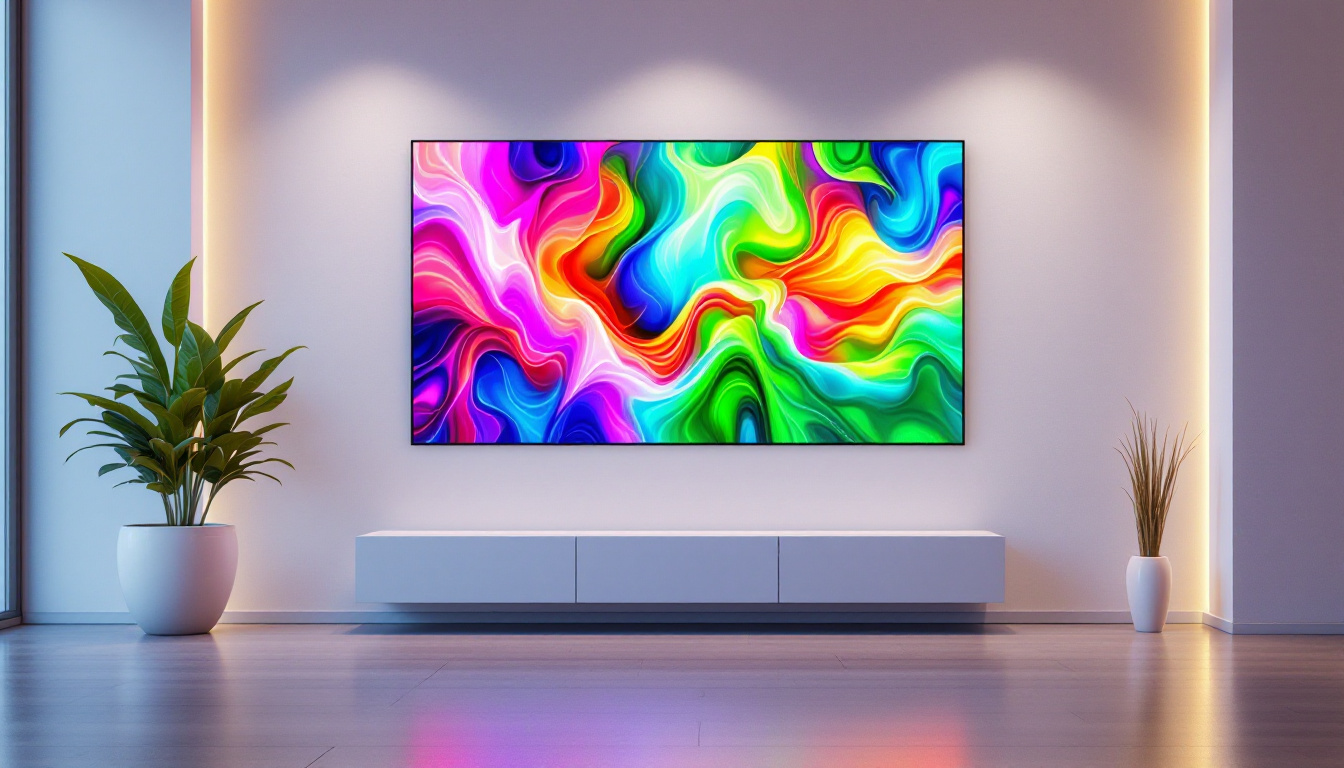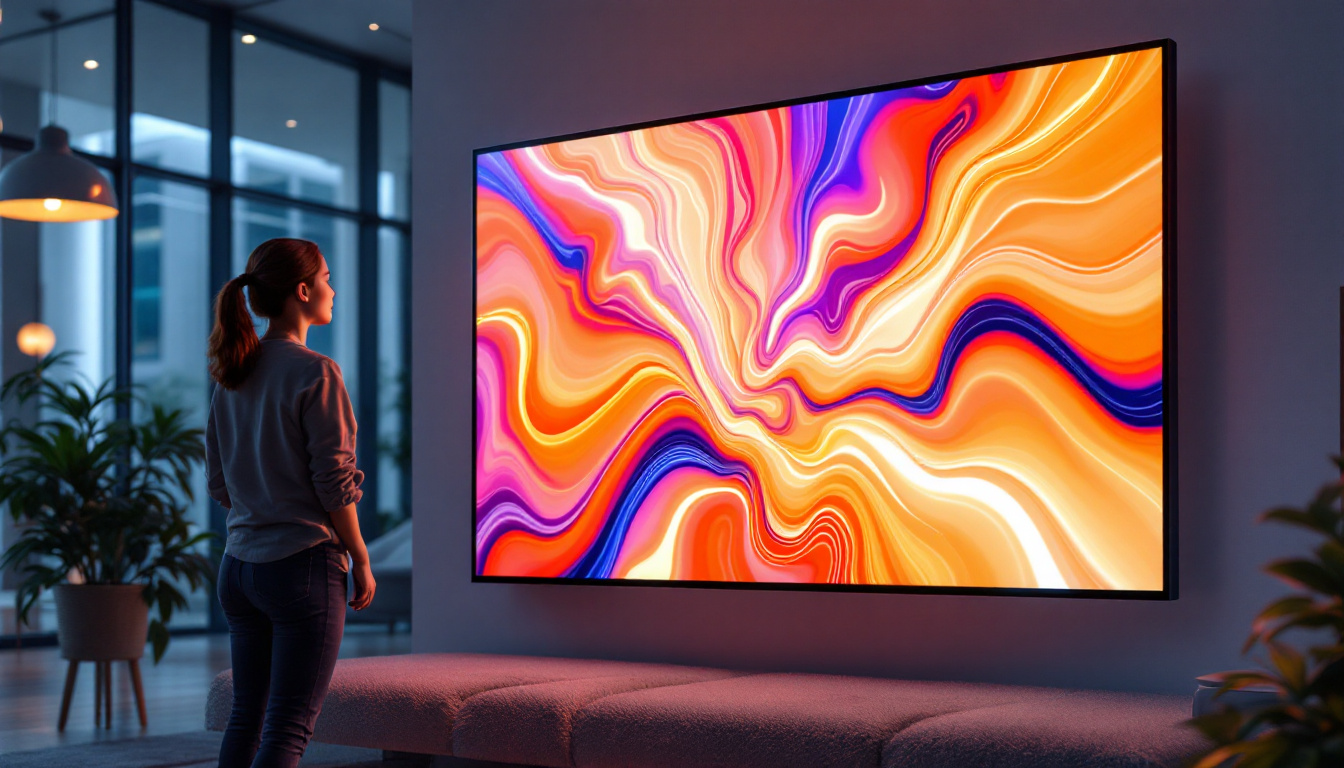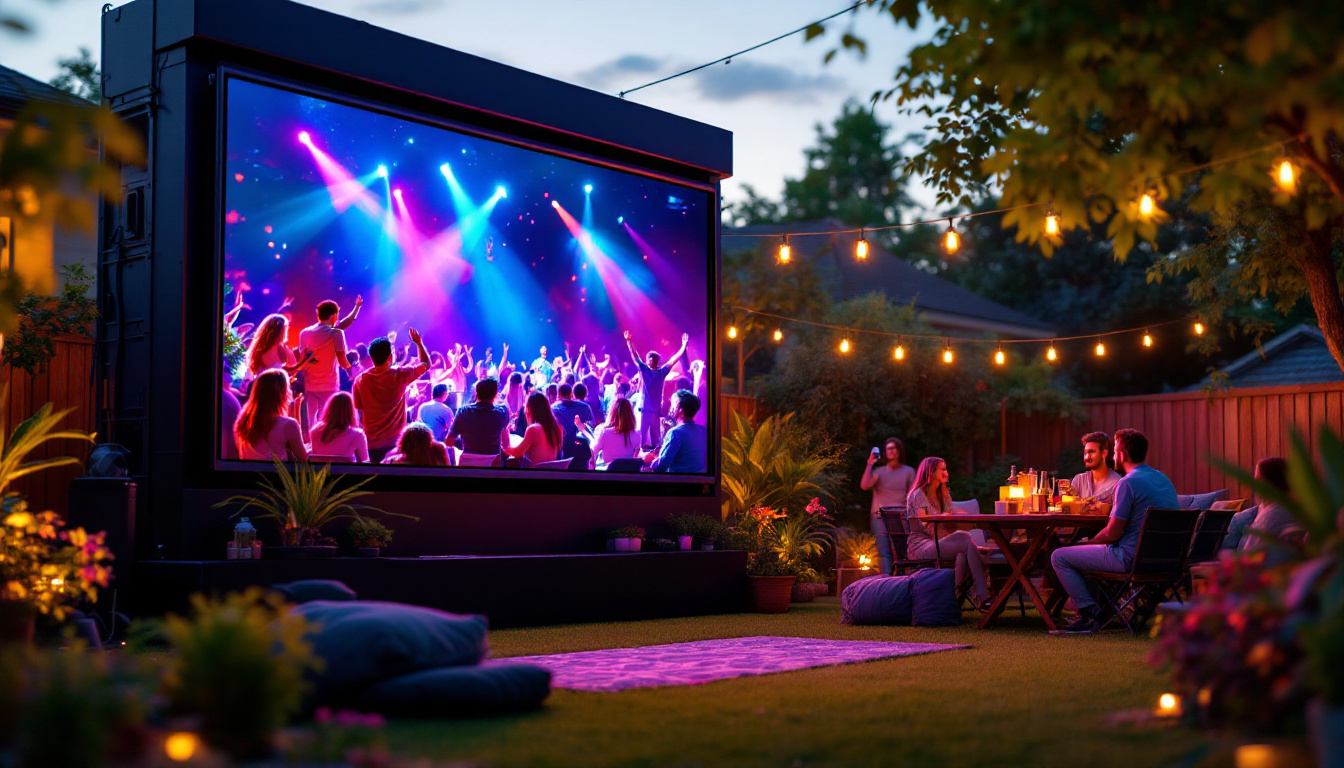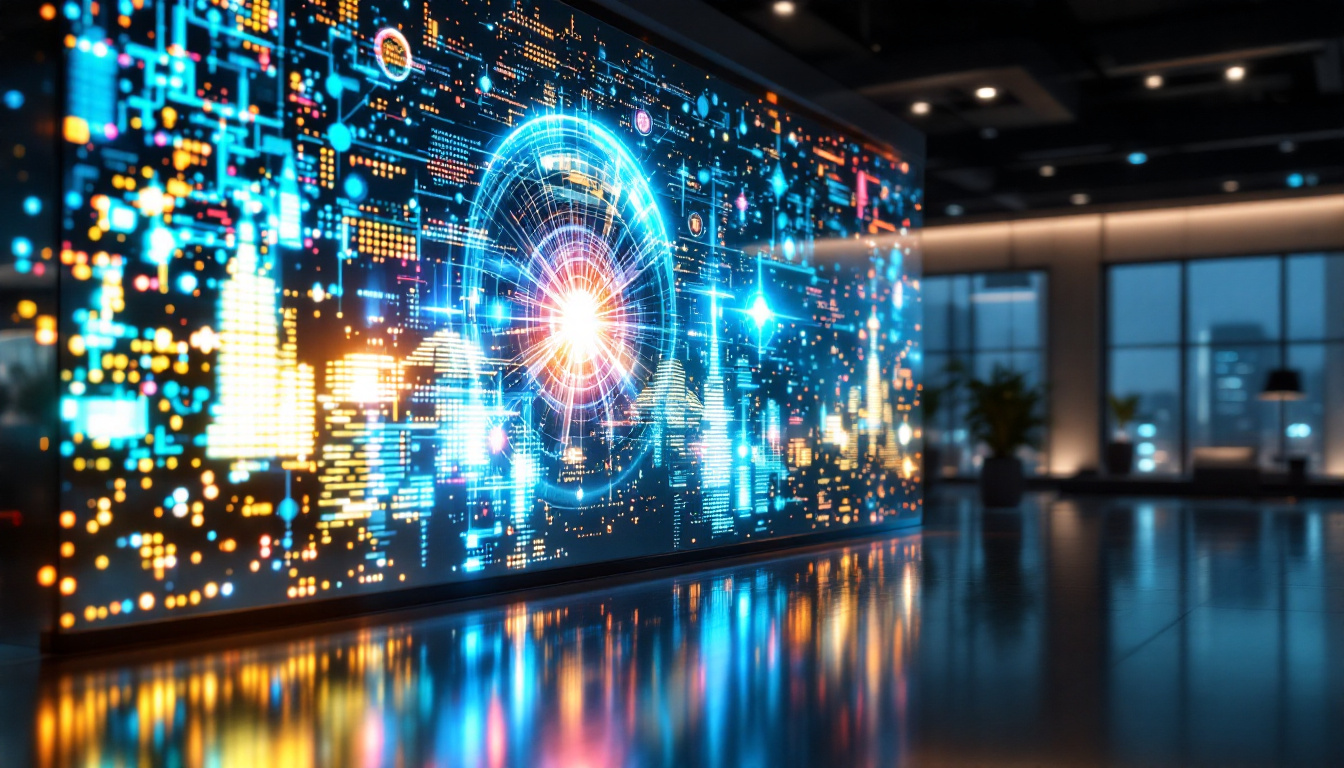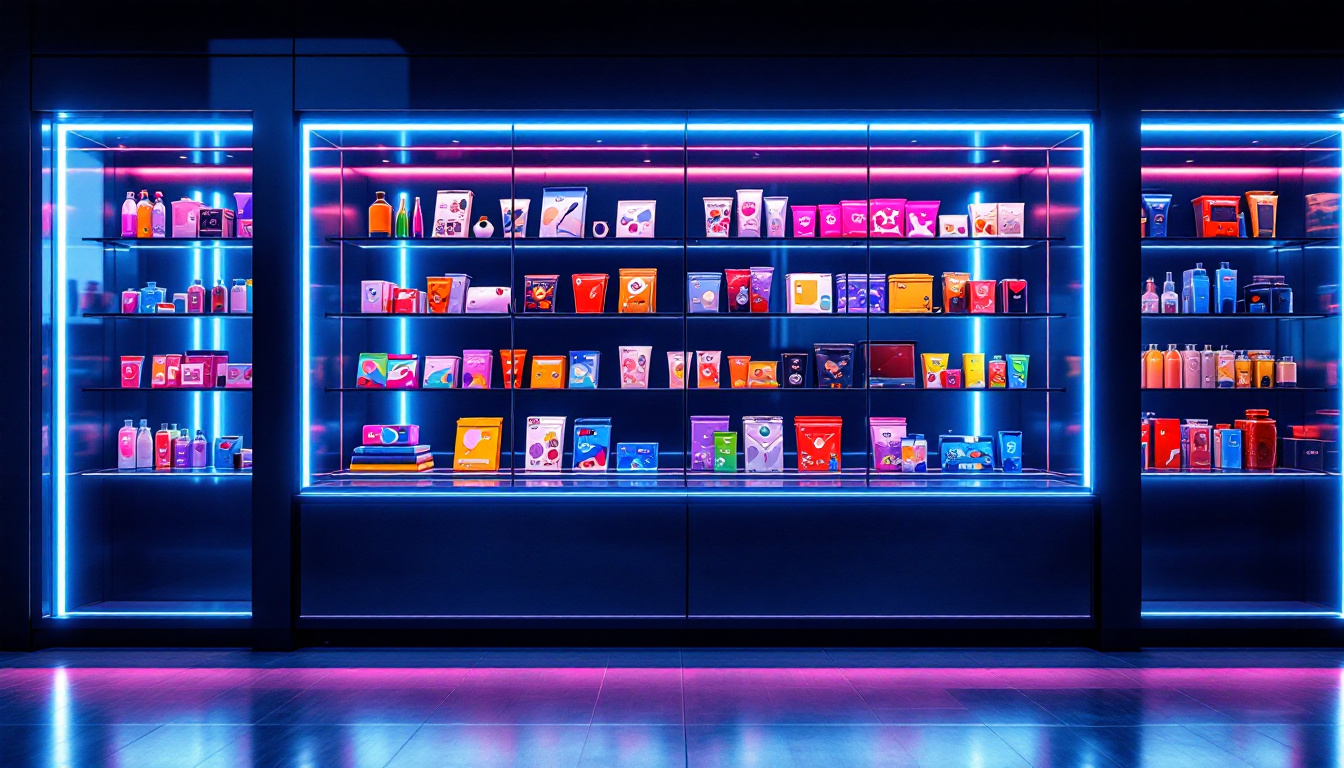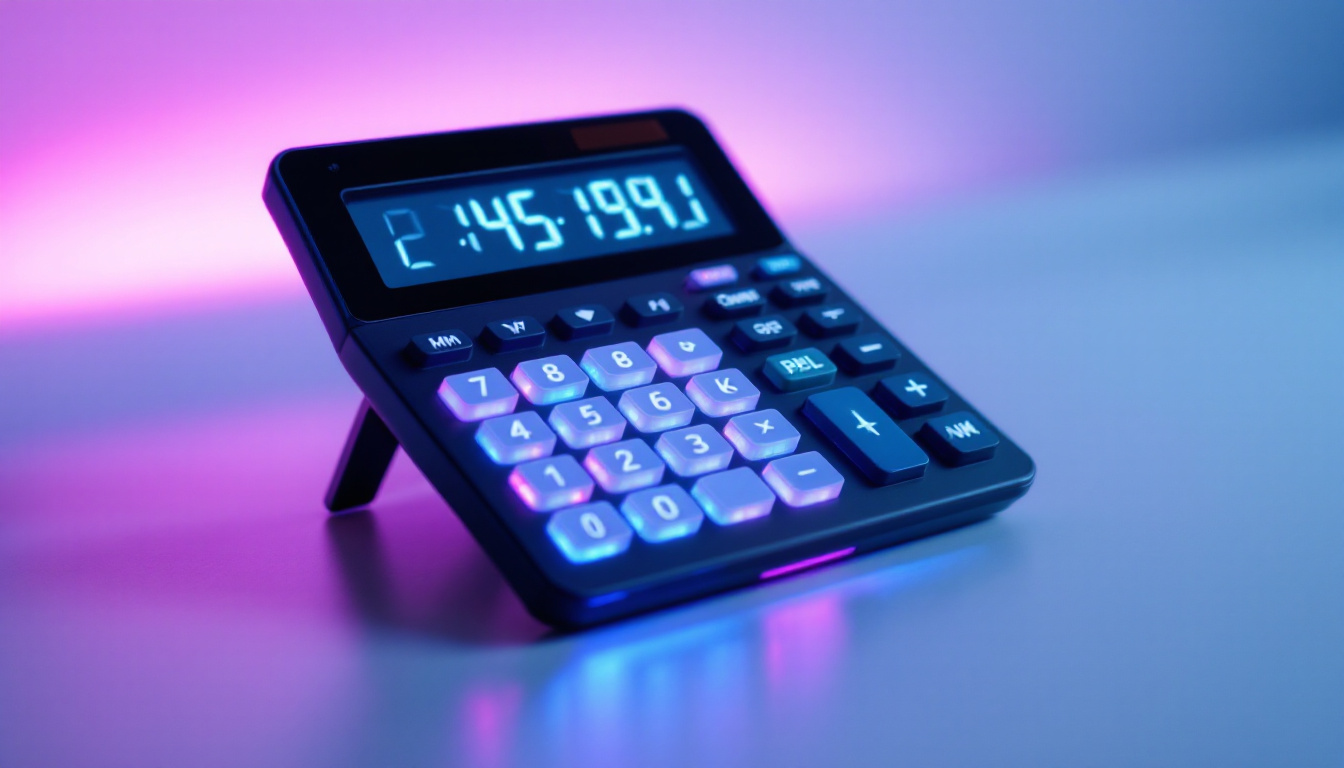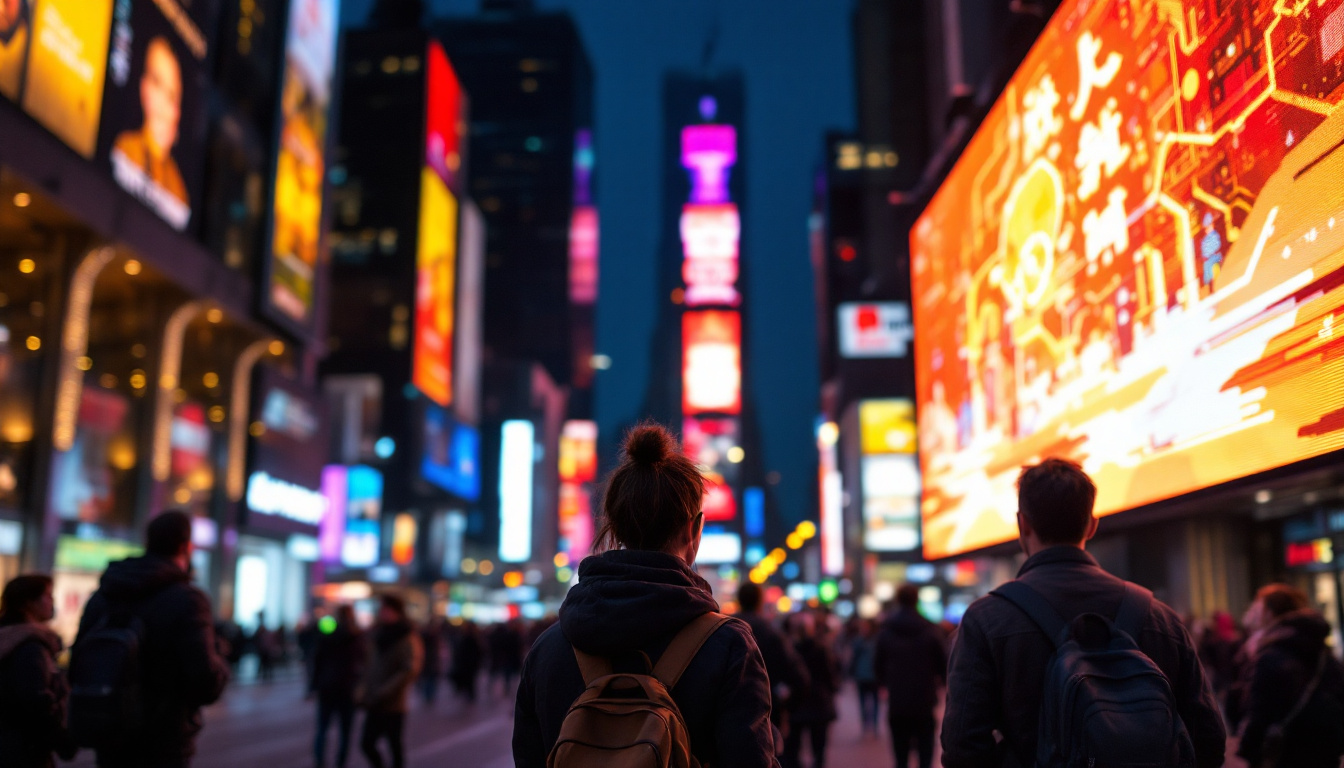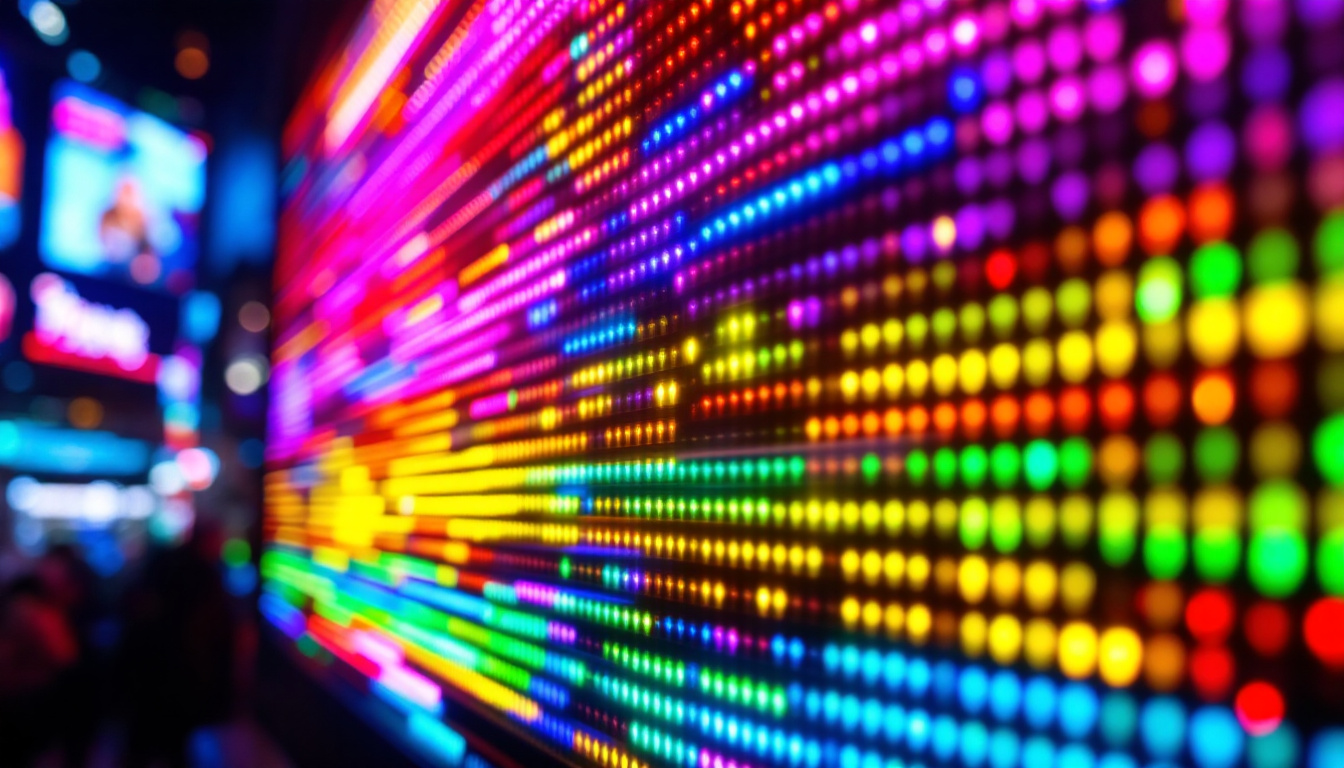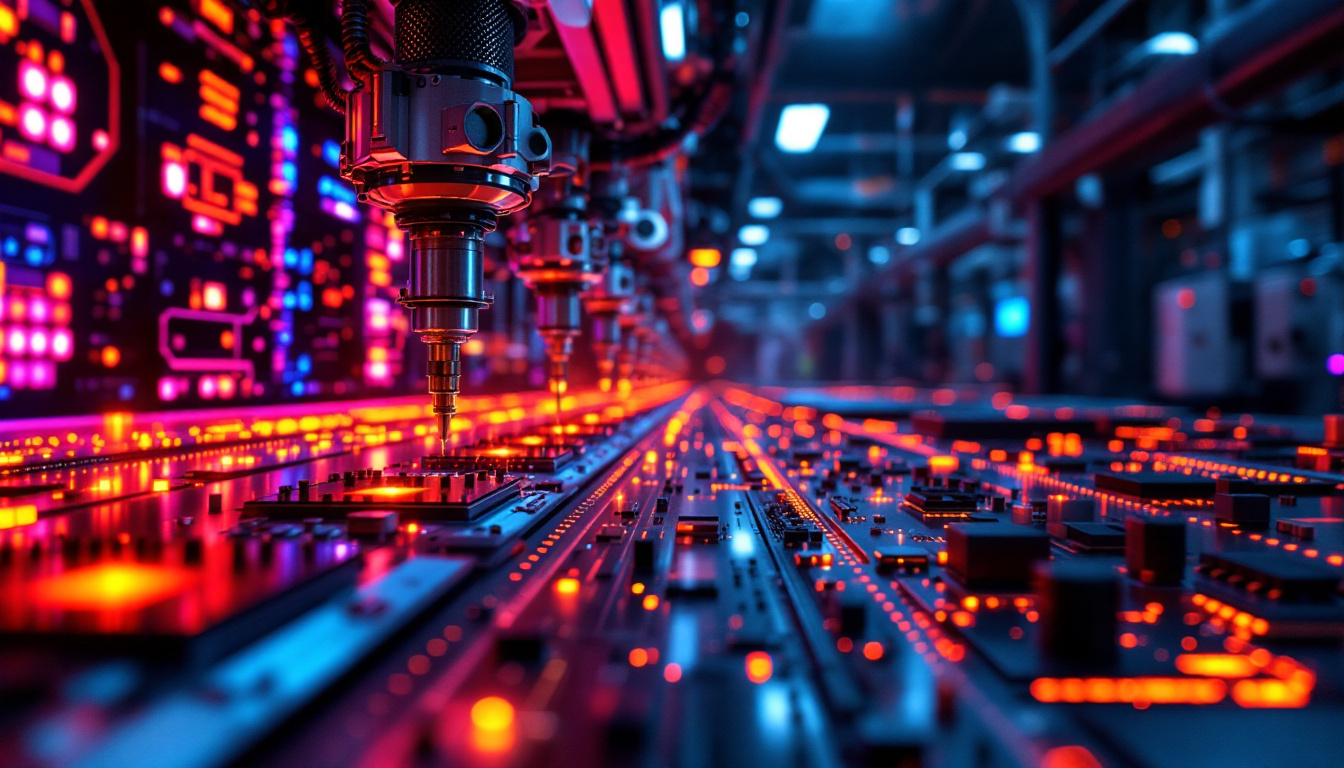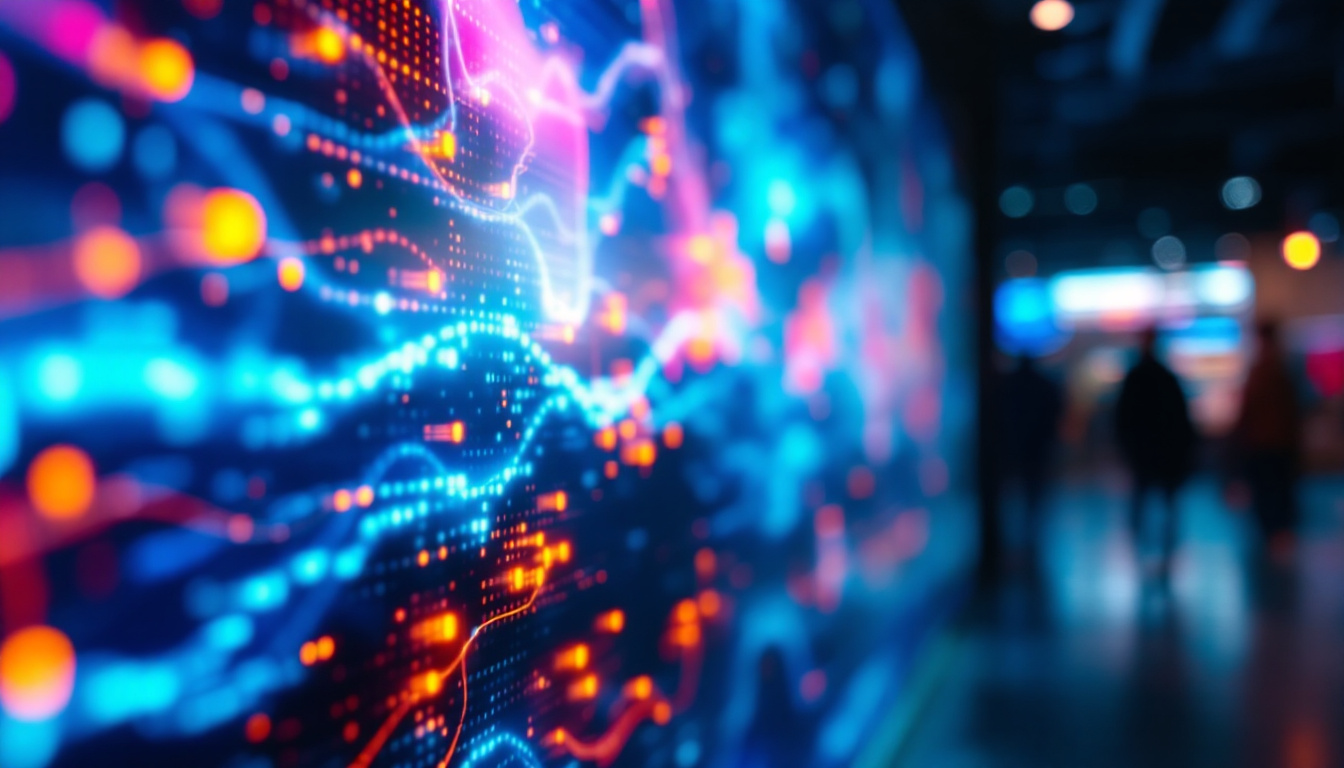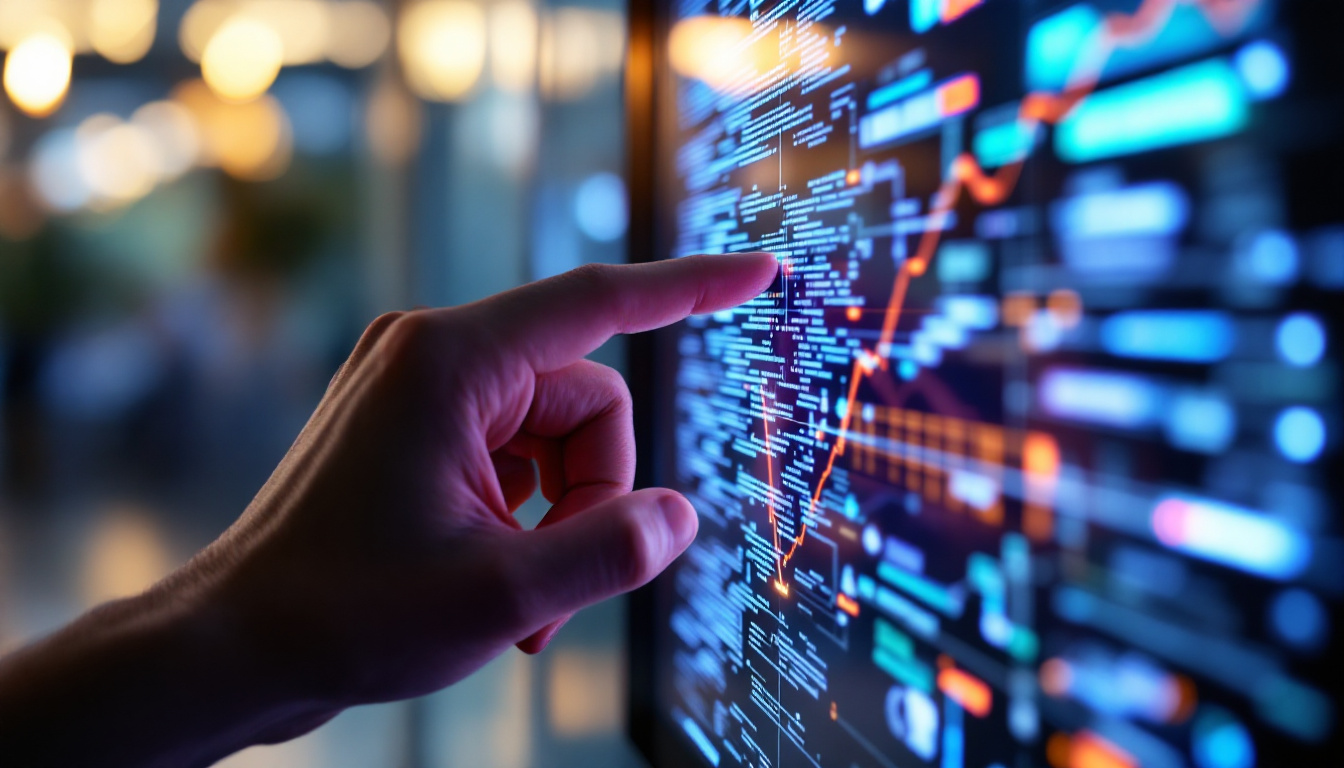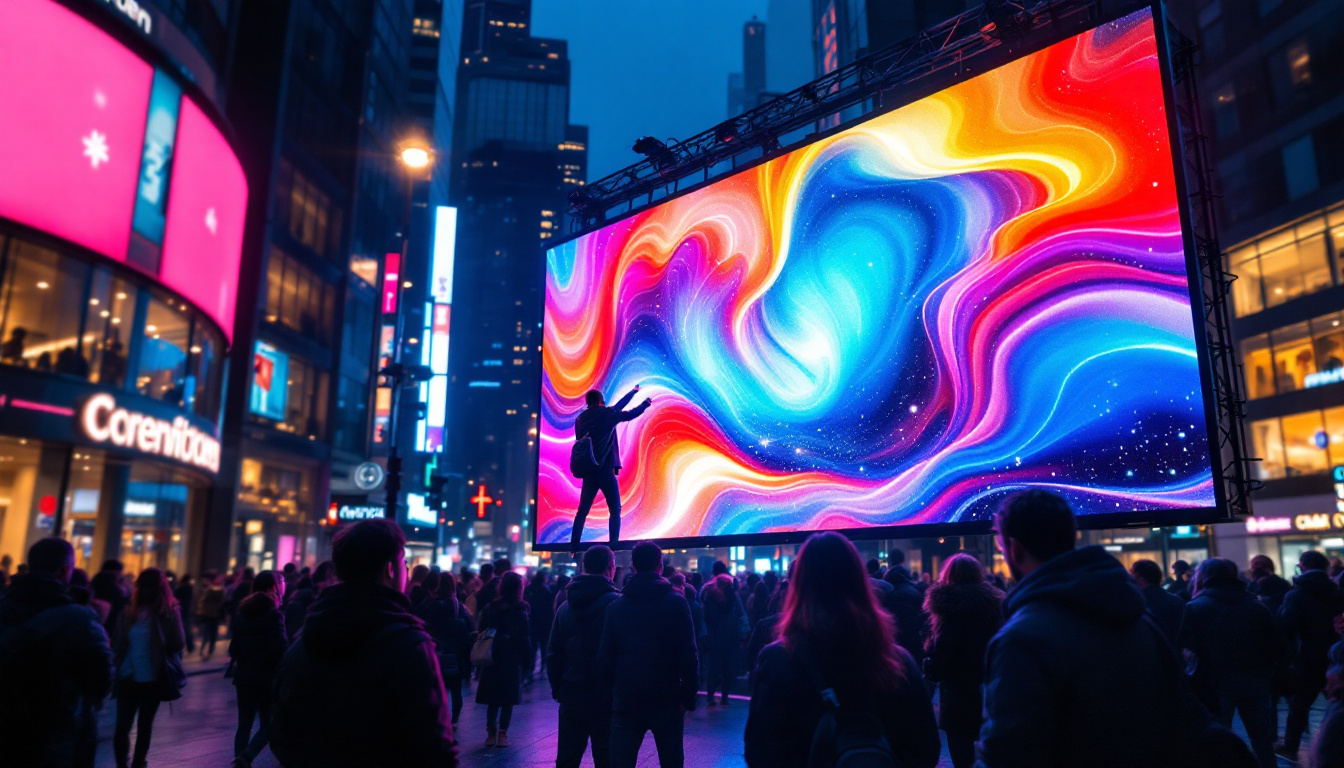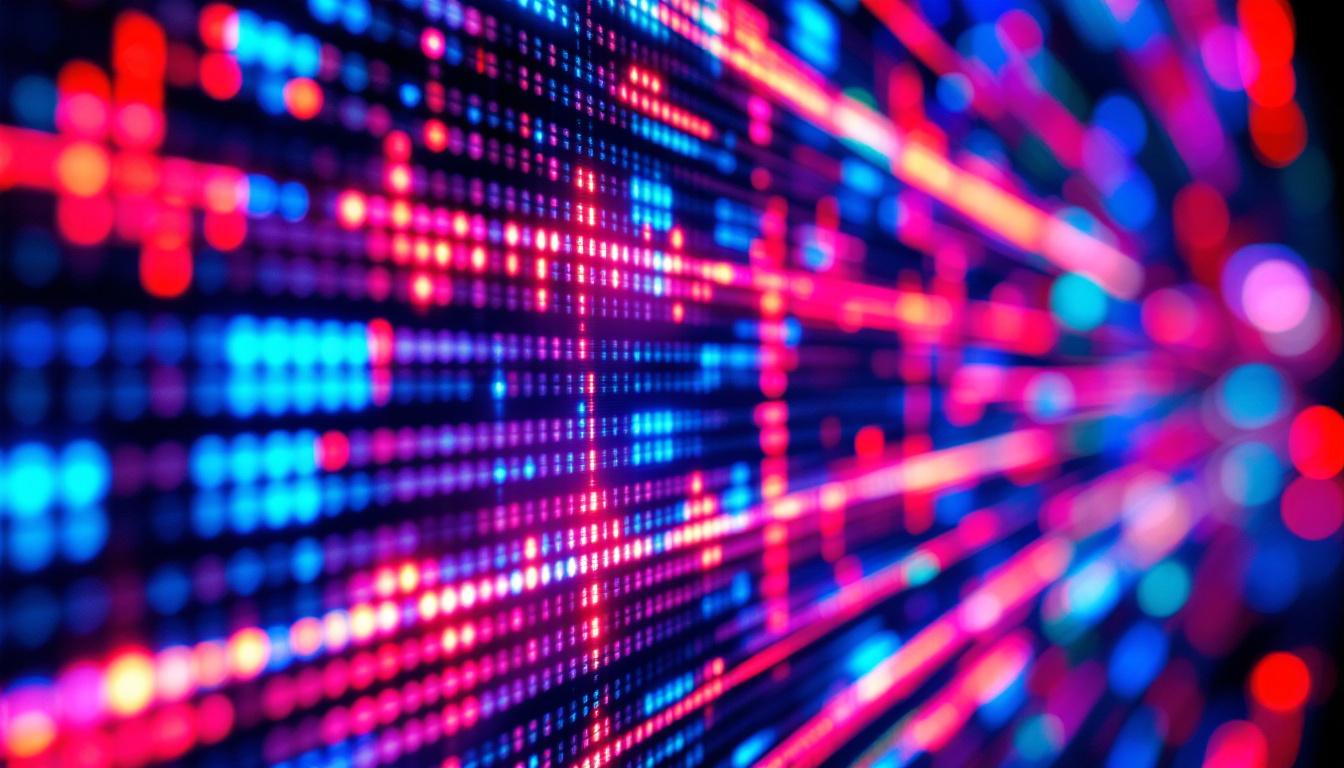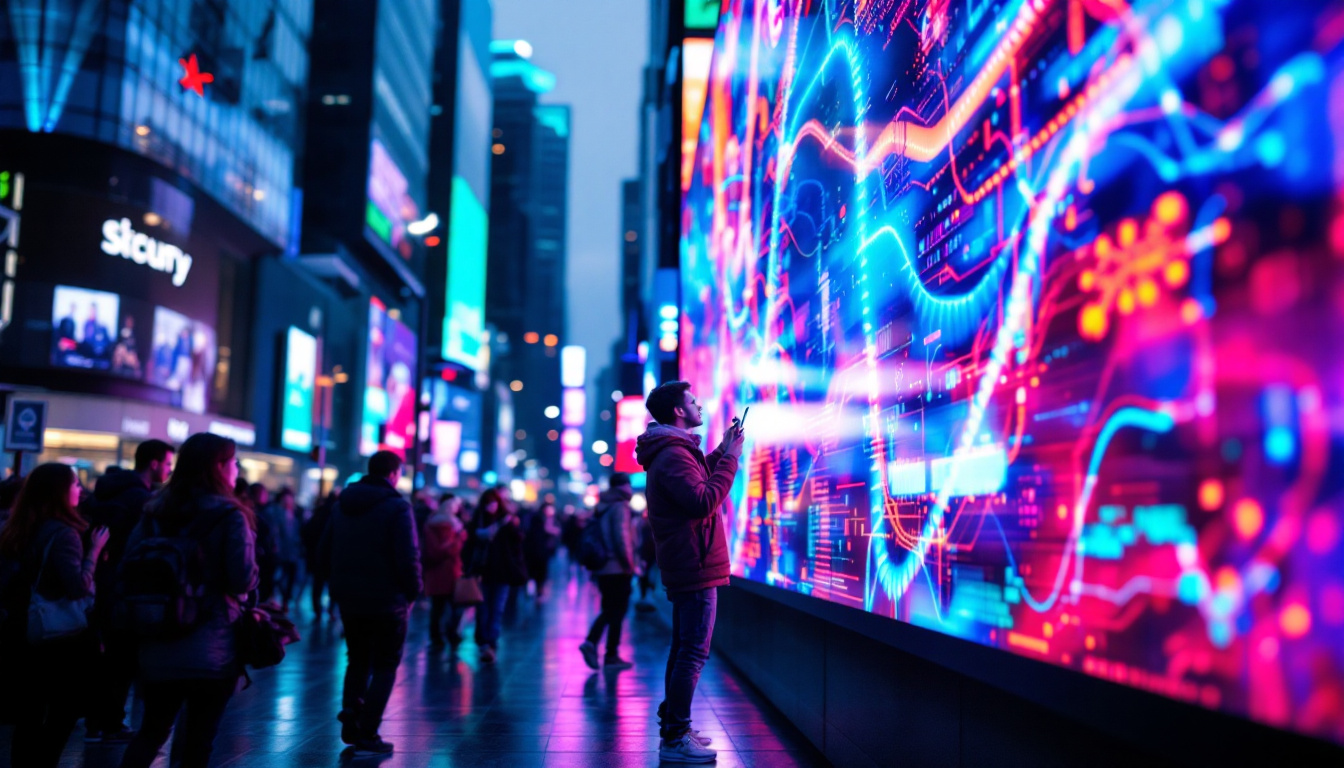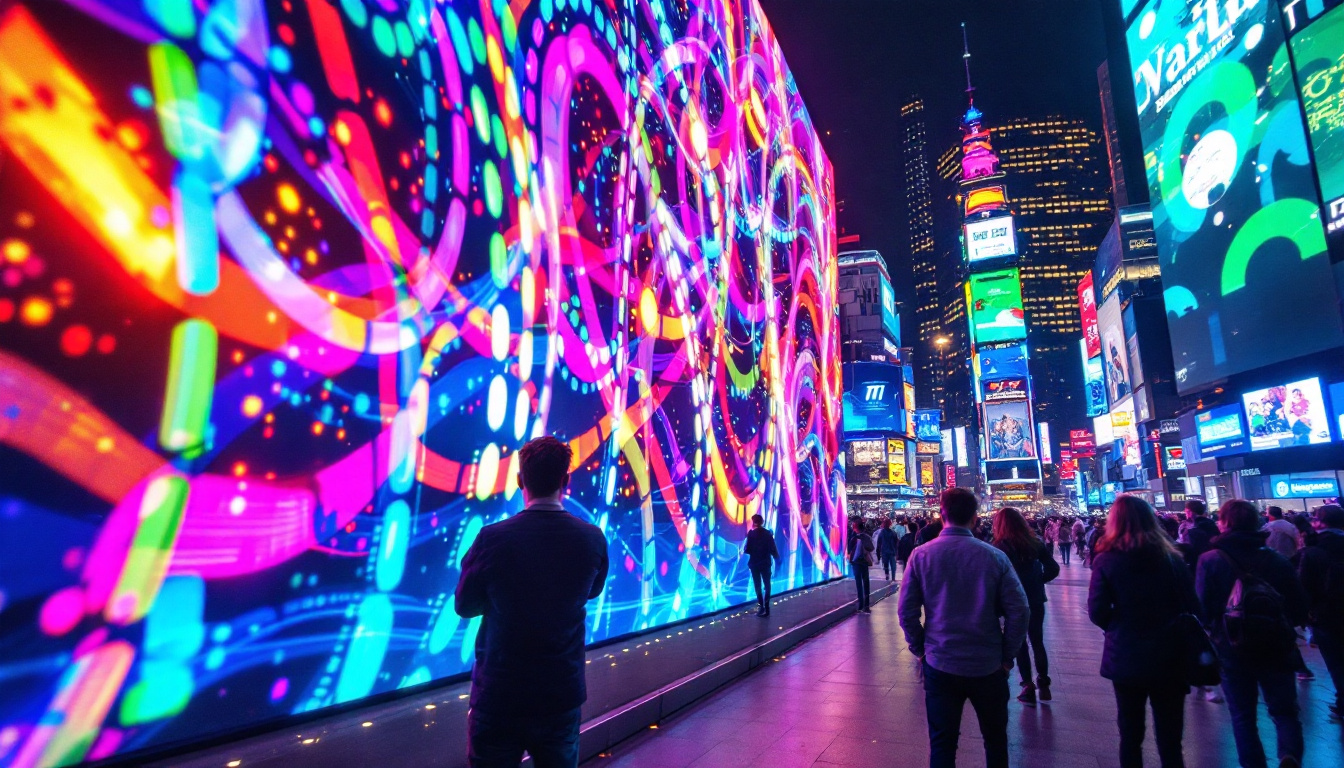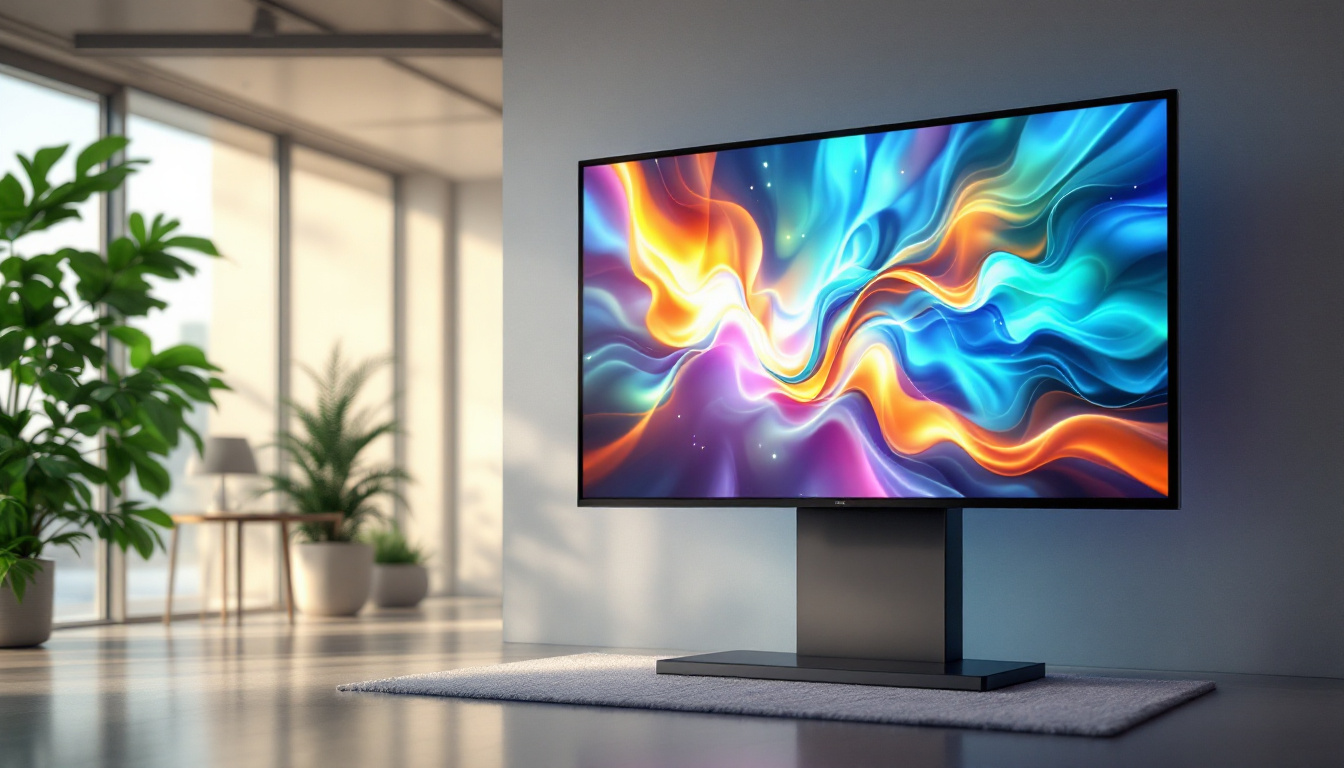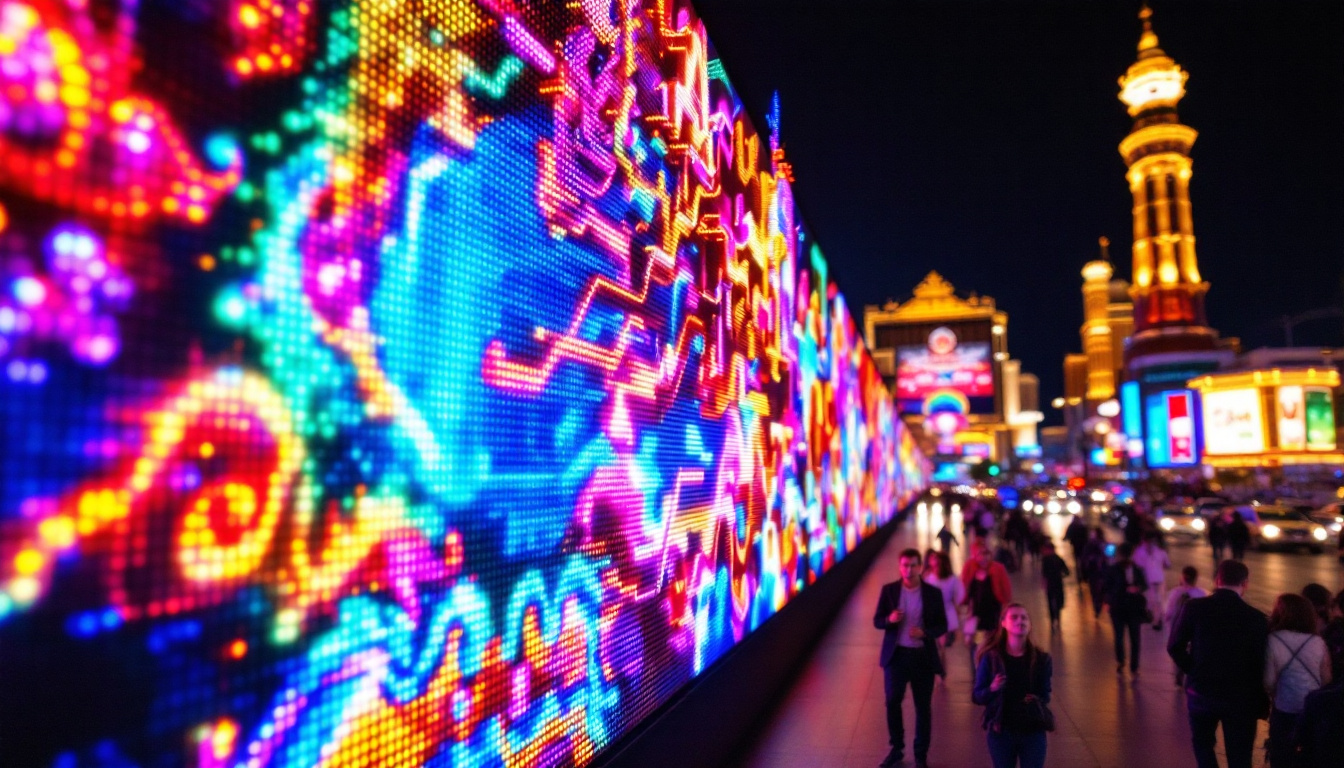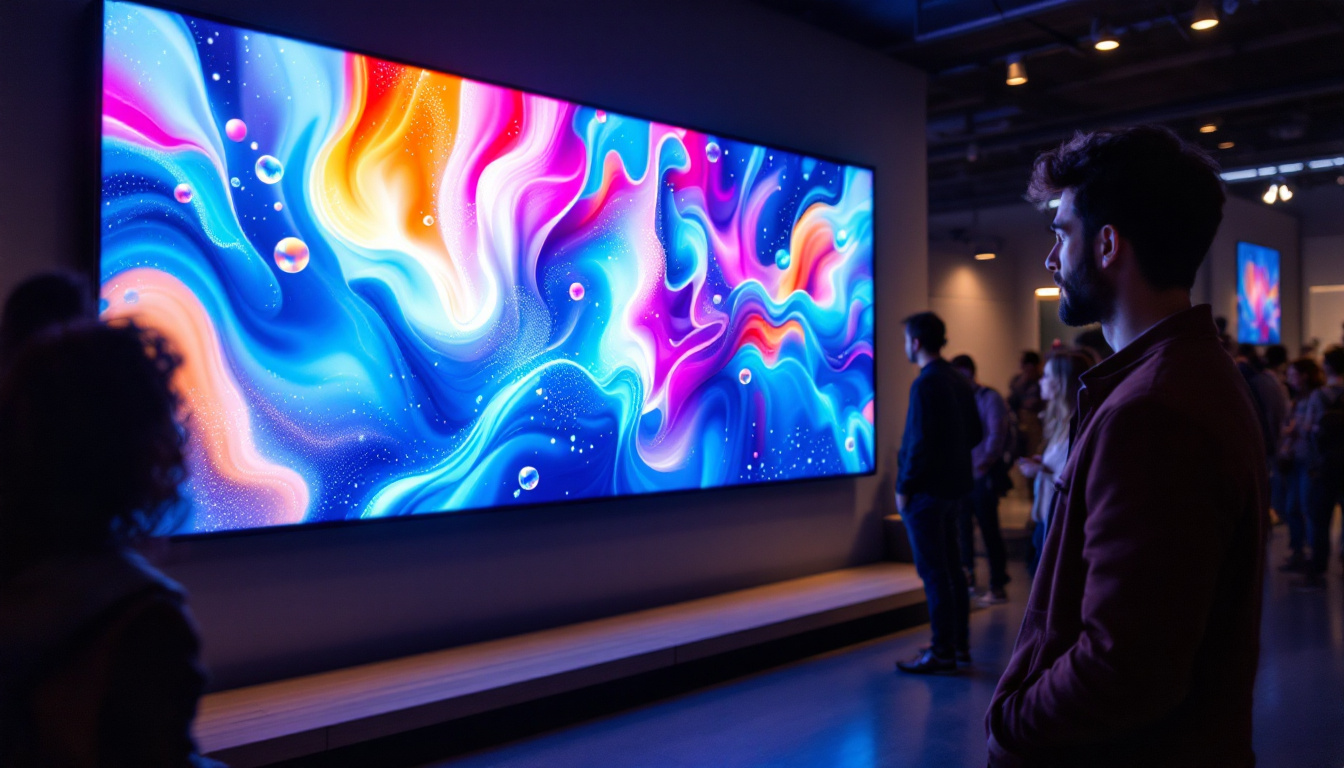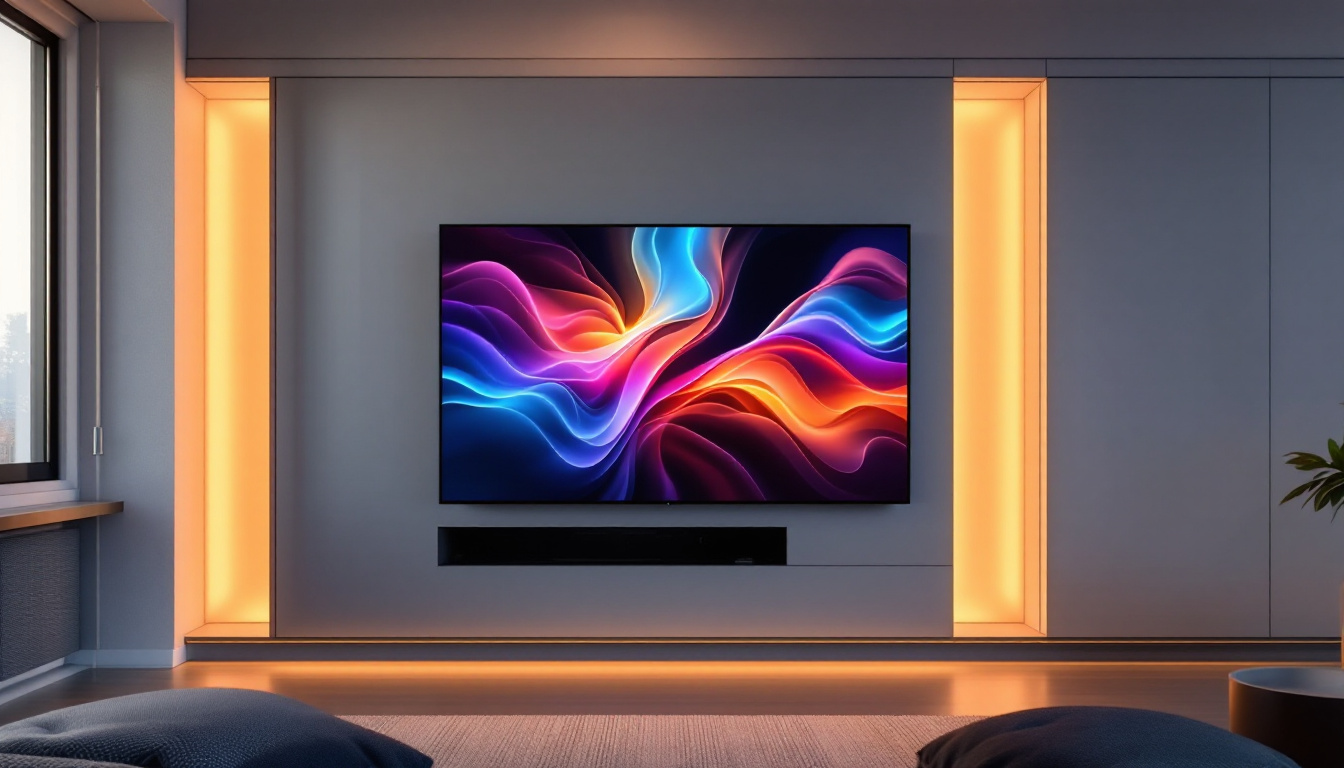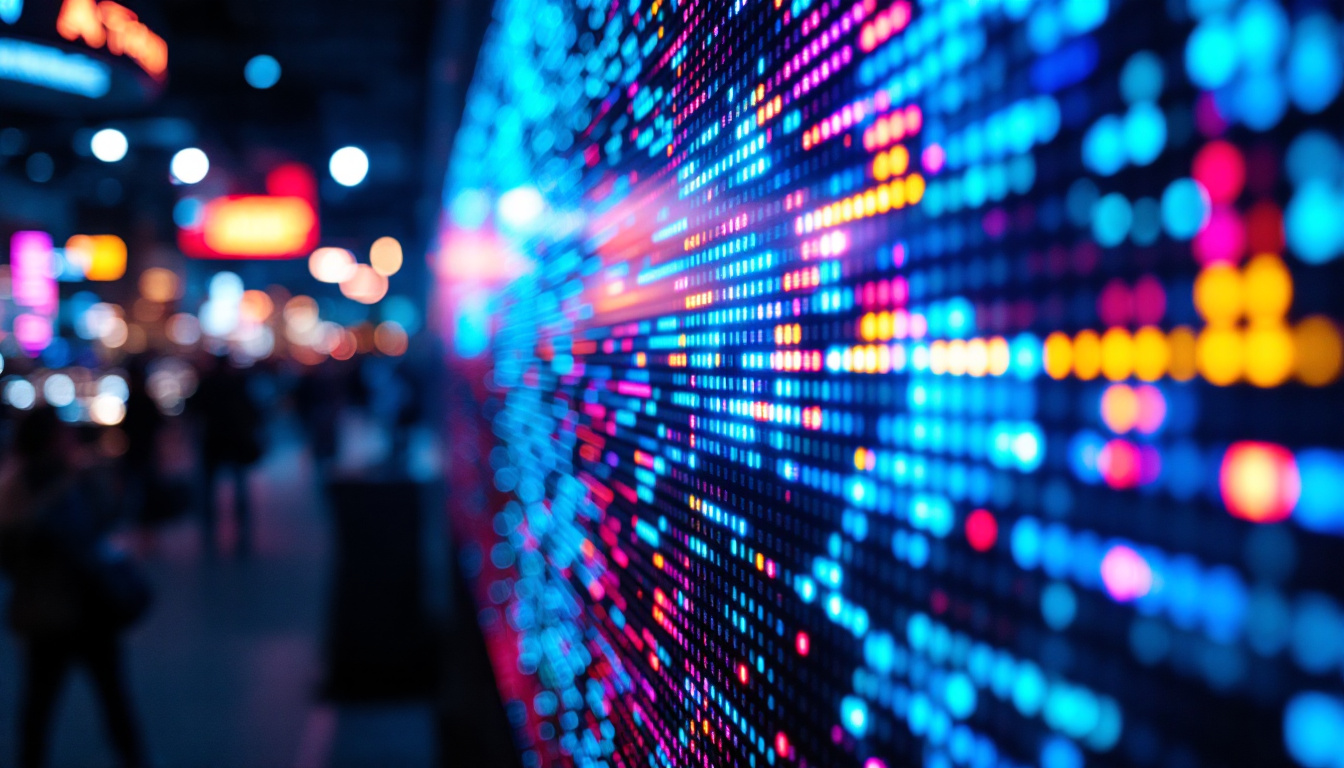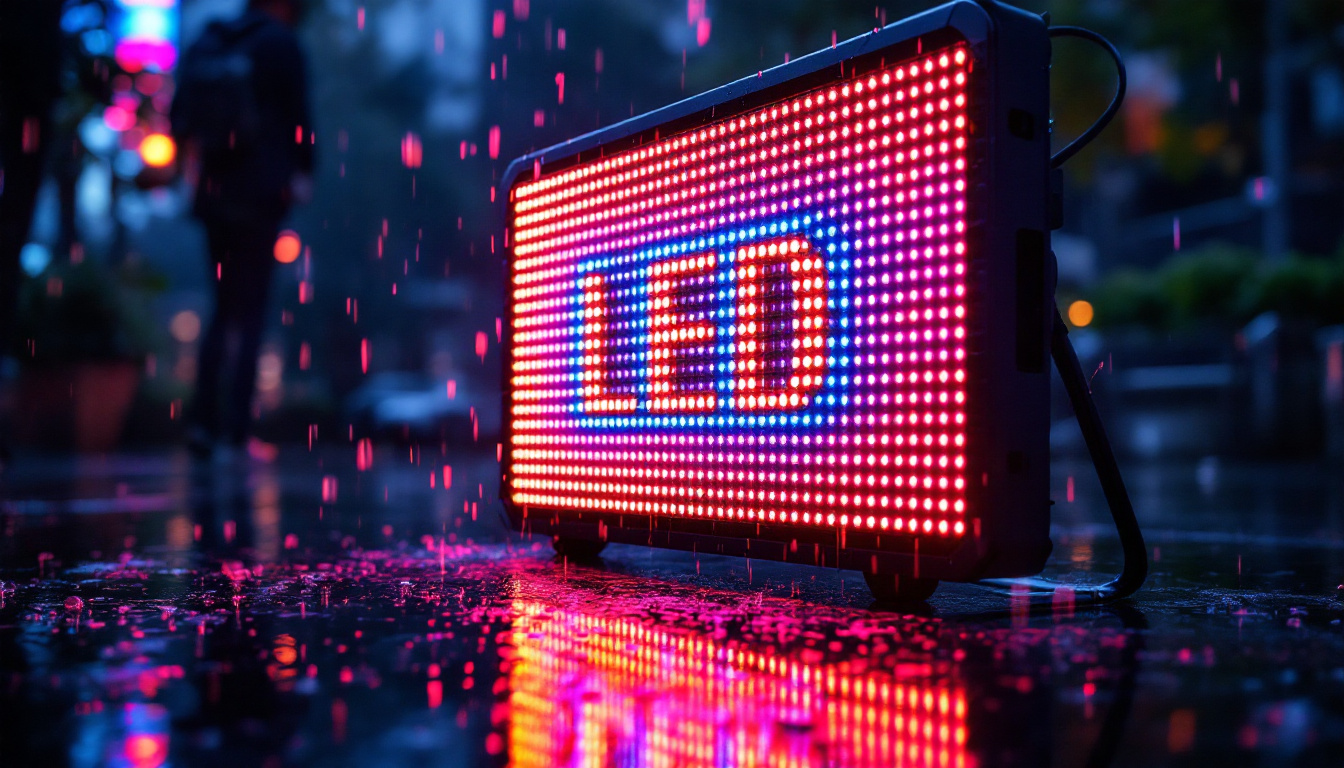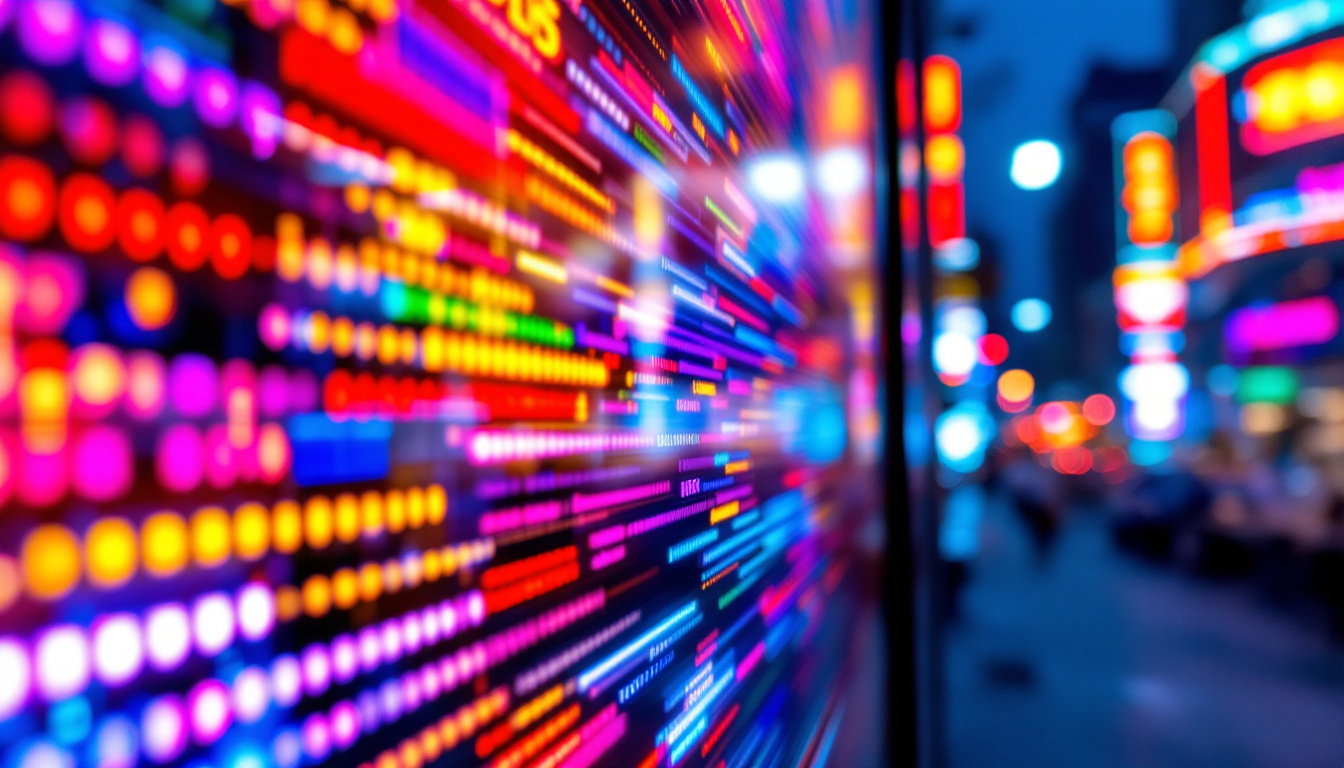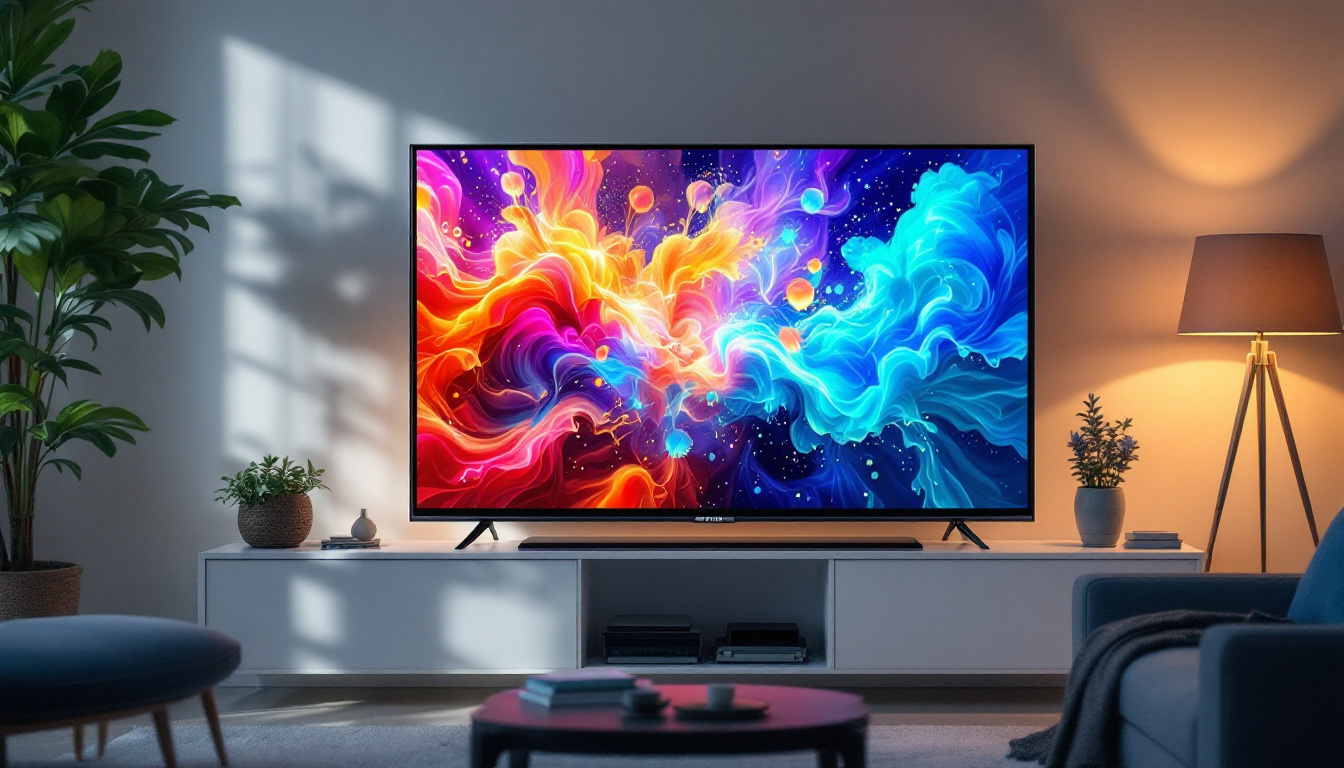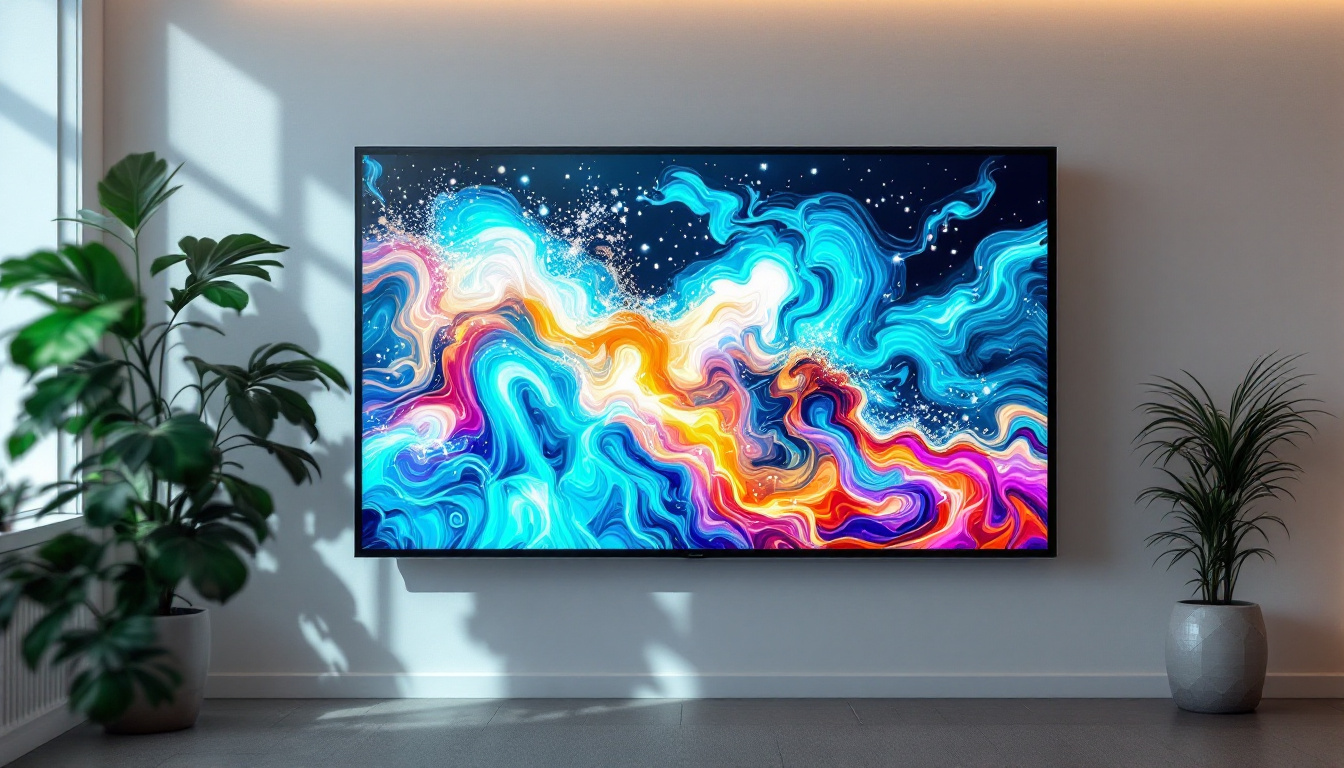In the realm of modern technology, LED displays have emerged as a transformative force in visual communication. From advertising billboards to indoor screens in shopping malls, these displays have redefined how information is conveyed and consumed. This article delves into the intricacies of LED displays, exploring their components, advantages, applications, and future trends.
Understanding LED Technology
Light Emitting Diodes (LEDs) are semiconductor devices that emit light when an electric current passes through them. This technology has revolutionized the display industry, offering a vibrant alternative to traditional lighting and display methods. The fundamental principle behind LEDs is electroluminescence, where the movement of electrons in a semiconductor material produces light. Unlike incandescent bulbs, which generate light through heat, LEDs are much more energy-efficient and have a longer lifespan, making them an environmentally friendly choice for both consumers and businesses.
As the demand for energy-efficient lighting solutions continues to rise, the development of LED technology has accelerated, leading to innovations such as smart LEDs that can be controlled via mobile applications. These advancements not only enhance user convenience but also open up new possibilities for creative lighting designs in both residential and commercial spaces. Furthermore, the integration of LEDs in various applications, from automotive lighting to architectural features, showcases their versatility and adaptability in modern technology.
Components of LED Displays
LED displays are composed of several key components, each playing a crucial role in the overall functionality and performance of the display. The primary elements include:
- LED Modules: These are the building blocks of LED displays, consisting of multiple LEDs arranged in a grid. Each module can be independently controlled, allowing for dynamic content display. The flexibility of these modules enables designers to create large-scale displays that can convey messages in real-time, enhancing audience engagement.
- Control Systems: The control system manages the operation of the LED display, processing input signals and determining how the content is displayed. This system can be hardware-based or software-based, depending on the complexity of the display. Advanced control systems can integrate with various content management software, allowing users to schedule and update content remotely, ensuring that the display remains relevant and engaging.
- Power Supply: LED displays require a stable power supply to function efficiently. The power supply unit converts electrical energy into a form that can be used by the LEDs, ensuring consistent brightness and performance. Innovations in power supply technology have also led to the development of systems that can optimize energy consumption, further enhancing the sustainability of LED displays.
Types of LED Displays
There are various types of LED displays, each tailored for specific applications. The most common types include:
- Indoor LED Displays: Designed for use in enclosed spaces, these displays typically have a higher pixel density, resulting in sharper images and text. They are commonly found in shopping malls, conference rooms, and theaters. The ability to display high-resolution content makes them ideal for presentations and advertising, where clarity is paramount.
- Outdoor LED Displays: Built to withstand harsh weather conditions, outdoor displays are larger and more robust. They feature lower pixel density but are designed for visibility from greater distances, making them ideal for billboards and stadiums. These displays often incorporate advanced technologies such as automatic brightness adjustment, ensuring optimal visibility in varying light conditions.
- Transparent LED Displays: These innovative displays allow light to pass through them, creating a unique visual experience. They are often used in retail environments to showcase products while maintaining visibility into the store. By blending digital content with the physical environment, transparent displays can enhance the shopping experience, drawing customers’ attention without obstructing their view of the merchandise.
Advantages of LED Displays
LED displays offer a multitude of benefits that make them an attractive choice for various applications. Their advantages can be categorized into several key areas:
Energy Efficiency
One of the most significant advantages of LED technology is its energy efficiency. Compared to traditional display technologies, such as LCD and plasma, LED displays consume considerably less power. This not only reduces operational costs but also contributes to environmental sustainability by lowering carbon footprints. The ability to operate on minimal energy makes LED displays an excellent choice for organizations looking to reduce their energy bills while promoting eco-friendly practices.
Brightness and Visibility
LED displays are known for their exceptional brightness, making them suitable for both indoor and outdoor environments. The high luminosity ensures that content remains visible even in direct sunlight, which is a critical factor for outdoor advertising. Additionally, LED displays provide excellent contrast ratios, enhancing the overall viewing experience. This capability allows for vibrant colors and sharp images, which can capture the attention of passersby, thereby increasing engagement and effectiveness in advertising campaigns.
Longevity and Durability
LED displays boast a long lifespan, often exceeding 100,000 hours of continuous use. This durability translates to lower maintenance costs and less frequent replacements. Furthermore, they are resistant to shock and vibration, making them ideal for high-traffic areas and dynamic environments. The robust nature of LED technology means that they can withstand harsh weather conditions, making them a reliable choice for outdoor installations. Additionally, advancements in LED technology continue to improve their resilience, ensuring that they remain a viable option for years to come.
Versatility in Applications
Another compelling advantage of LED displays is their versatility. They can be used in a wide range of applications, from large-scale billboards and sports arenas to retail environments and corporate settings. Their modular design allows for easy customization in size and shape, enabling creative installations that can fit any space. Furthermore, LED displays can support various content formats, including video, animations, and static images, providing endless possibilities for dynamic content delivery. This adaptability makes them an ideal solution for businesses looking to enhance their visual communication strategies.
Low Heat Emission
LED displays also generate significantly less heat compared to traditional display technologies. This characteristic not only contributes to energy efficiency but also reduces the need for extensive cooling systems, further lowering operational costs. The minimal heat output allows for safer installations, particularly in enclosed spaces where overheating could be a concern. As a result, LED displays can be integrated into a variety of environments without the worry of heat-related issues, making them a practical choice for both commercial and residential applications.
Applications of LED Displays
The versatility of LED displays allows them to be utilized in a wide range of applications across various industries. Some of the most notable applications include:
Advertising and Marketing
LED displays have become a staple in advertising due to their eye-catching visuals and dynamic content capabilities. Businesses use them to promote products, services, and events, capturing the attention of potential customers. The ability to change content in real-time allows for targeted marketing strategies that can adapt to audience preferences.
Entertainment and Events
In the entertainment industry, LED displays are integral to concerts, festivals, and sporting events. They are used for stage backdrops, scoreboards, and live feeds, enhancing the overall experience for attendees. The flexibility of LED technology allows for creative and immersive displays that can be synchronized with music and performances.
Transportation and Wayfinding
LED displays play a crucial role in transportation systems, providing real-time information to passengers. They are commonly used in airports, train stations, and bus terminals to display arrival and departure times, gate information, and other essential updates. Additionally, LED signage is employed in wayfinding systems to guide individuals through complex environments.
Future Trends in LED Display Technology
As technology continues to evolve, the future of LED displays looks promising. Several trends are shaping the direction of this industry:
Advancements in Pixel Technology
One of the most exciting developments in LED display technology is the advancement of pixel technology. MicroLED and MiniLED displays are gaining traction, offering higher resolutions and improved color accuracy. These innovations enable the creation of larger displays without sacrificing image quality, paving the way for new applications in various fields.
Integration with Smart Technology
The integration of LED displays with smart technology is another trend to watch. As the Internet of Things (IoT) continues to expand, LED displays are becoming increasingly connected. This connectivity allows for real-time data updates, remote management, and enhanced interactivity, creating a more engaging experience for users.
Focus on Sustainability
With growing concerns about environmental impact, the LED display industry is placing a greater emphasis on sustainability. Manufacturers are exploring eco-friendly materials and production processes, as well as recycling programs for old displays. This shift towards sustainability not only benefits the environment but also appeals to consumers who prioritize eco-conscious brands.
Challenges Facing LED Display Technology
While LED displays offer numerous benefits, they are not without challenges. Understanding these challenges is essential for stakeholders in the industry.
High Initial Costs
The initial investment for LED display technology can be substantial, particularly for large-scale installations. While the long-term savings on energy and maintenance costs can offset this investment, the upfront costs may deter some businesses from making the switch. As technology advances and production processes improve, it is expected that prices will become more accessible.
Technical Complexity
LED displays require specialized knowledge for installation and maintenance. The complexity of control systems and the need for precise calibration can pose challenges for businesses without in-house expertise. Training and support from manufacturers can help mitigate these issues, ensuring that users can fully leverage the capabilities of their LED displays.
Environmental Concerns
Despite their energy efficiency, LED displays are not entirely free from environmental concerns. The production and disposal of electronic components can contribute to e-waste. Addressing these concerns requires a commitment from manufacturers to implement sustainable practices throughout the product lifecycle.
Conclusion
LED displays have undeniably transformed the landscape of visual communication, offering unparalleled advantages in energy efficiency, brightness, and versatility. Their applications span a wide range of industries, from advertising to transportation, making them an essential tool for modern businesses. As technology continues to evolve, the future of LED displays promises exciting advancements, including improved pixel technology, smart integration, and a focus on sustainability.
While challenges remain, the benefits of LED displays far outweigh the drawbacks, positioning them as a cornerstone of contemporary visual communication. As industries continue to embrace this technology, it is clear that LED displays will play a pivotal role in shaping the future of how information is shared and experienced.
Illuminate Your Space with LumenMatrix
Ready to elevate your visual communication with cutting-edge LED display technology? LumenMatrix is at the forefront of innovation, offering a diverse range of LED display solutions tailored to your needs. From Indoor and Outdoor LED Wall Displays to specialized options like Vehicle, Sports, and Floor LED Displays, we have the tools to transform your space and captivate your audience. Embrace the future of digital signage with our Custom, All-in-One, and Transparent LED Displays. Check out LumenMatrix LED Display Solutions today and make a lasting impression with clarity and impact.

